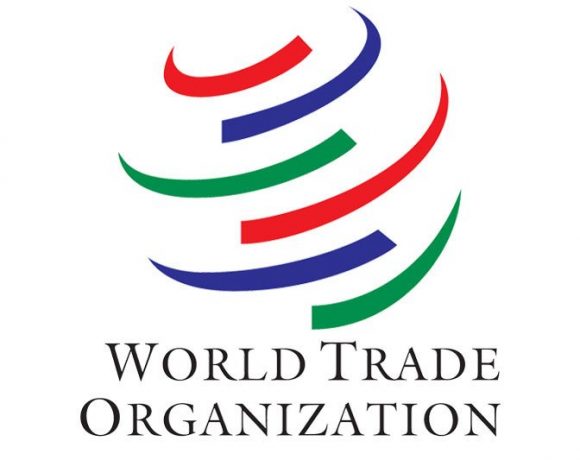Being Ethical When it Comes to Business

 Ask business managers how to manage business ethics and they are bound to receive many answers or quizzical looks. How can managers educate employees about the importance of business ethics in the company? Integrating business ethics into an organization, one must first be able to understand business ethics. As a result of many scandals in large corporations today, business ethics is fast becoming an important subject to many business professionals. Not only do they have to learn what constitutes ethical responsibility, but they also have to understand and manage it. Companies while trying to uphold a reputable image, slip when there is a profit to be made, and this results in disasters such as the “no doc loans” or “liar loans” and the resulting crash of the housing market. Agencies need to be in place to ensure people are not taken advantage of and coerced into loans that they cannot realistically afford.
Ask business managers how to manage business ethics and they are bound to receive many answers or quizzical looks. How can managers educate employees about the importance of business ethics in the company? Integrating business ethics into an organization, one must first be able to understand business ethics. As a result of many scandals in large corporations today, business ethics is fast becoming an important subject to many business professionals. Not only do they have to learn what constitutes ethical responsibility, but they also have to understand and manage it. Companies while trying to uphold a reputable image, slip when there is a profit to be made, and this results in disasters such as the “no doc loans” or “liar loans” and the resulting crash of the housing market. Agencies need to be in place to ensure people are not taken advantage of and coerced into loans that they cannot realistically afford.
Ethical behaviour in business is consistent with the principles, norms and standards of business practice that have been agreed upon by society. Many standards and policies were translated into laws, but there are also some behaviours that cross into the ethics realm not considered illegal. Also, some behaviours illegal in the United States, but they may not be recognized as illegal in other countries. Where, when, and how is it determined what is ethical and what is not ethical? Should individuals even bother to conduct themselves ethically if there is no law against it? People in society have morals, values, and standards that feed into their ethical decisions. Organizations should be concerned with whether or not they are perceived ethically or their reputations can be irrevocably damaged.
When organizations are known for their social responsibility and business ethics, they attract employees loyal to the company. It is essential for executives and managers to care about their image and instil ethical behaviour in their business dealings. Their company’s reputation and their jobs depend on it. Failure to be ethically responsible can result in them being held liable not only for any wrongdoing they participate in but also that of their employees. When ethical behaviour is presented from the top echelon down, employees eagerly “buy in” to this ideal. Furthermore, other companies, investors, and society are more willing to associate with a company that adheres to ethical decision-making practices.
Just as everyone grows up with different values and morals, everyone approaches ethical decision-making differently. We want to believe that everyone has “good” intentions and they want to make the “right” decisions, but when confronted with an ethical dilemma, it is proven to be a difficult task. The most common is “Do unto others as you would have them do unto you”, the Golden Rule. Using the veil of ignorance one comes to a decision from the perspective of everyone that could be involved or affected by the final decision. One has to be blind to colour, age, status, and even their own identity. This particular approach is interesting because the final decision may negatively affect the very person making the decision if he or she comes in blindly.
Another perspective is being good by nature. As you associate with others who share the same ideals and value practicing good ethics. People who use this approach are defined by a relevant moral community. Whichever approach one uses, they must have the facts and analyze what the conflict, or ethical dilemma, is. Next, the short-term and long-term consequences and the obligations to the stakeholders need to be identified. Finally, when making decisions, using the disclosure rule can help determine whether or not one would be comfortable with the decision being broadcast on news stations. The last two steps to consider are making sure there are alternative actions and going with intuition. If you believe that you are about to make the wrong decision, you should not do it.
There are also psychological approaches to making ethical decisions. This is a process whereby an individual must right be able to recognize that there is an ethical dilemma. The steps involved are “ethical awareness, ethical judgment, and ethical action”. According to the textbook, for someone to be ethically aware, “three things need to happen”. One, people need to realize that the situation as hand not only they but also everyone around them will consider to be an ethical problem. This problem is one that may have been discussed during ethics training, during orientation to the company, or simply in the cafeteria room. Two, determine if ethical language is used. For instance, in week one threaded discussion, the Japanese company offered a bribe. The word “bribe” is a negative word, and one would immediately think they are in an ethically wrong situation. Finally, the person sees that the problem has the potential to cause harm. In the case of the Japanese company offering a bribe, if it were accepted, there is the potential for the organization to lose future investors, their reputation, and the executive would lose not only his job but also his reputation and integrity. Once someone is ethically aware he or she must make an ethical judgment and take ethical action.
Ethical judgment and ethical action from varies between individuals because everyone has his or her own characteristics, values, and morals. There are five differences discussed in the textbook that influence some people to be behave ethically, and others to behave unethically. They are ethical decision-making style, cognitive moral development, locus of control, Machiavellianism and moral disengagement. These differences in people range from not wanting to cause harm to others, weighing the consequences of a decision, to being obedient and avoiding punishment or getting rewarded; or being in control of what happens to leaving it to fate. Machiavellianism, for instance, is primarily associated with persons who behave unethically. They believe that one must do whatever it takes to achieve a positive outcome, even if it means lying or cheating. Moral disengagement, on the other hand, involves people who stop themselves if they are about to behave unethically because they generally have internalized standards of good conduct. The bottom line is that ethical decision-making is influenced by individual differences.
Ethical decision-making is an important aspect of the work environment and managers must act accordingly or they could lose their jobs if an ethical situation is mishandled. Managers must consider their values and what is important to them, or reflect on a personal narrative, when facing ethical issues. Ethical issues that may arise in the workplace are discrimination, harassment, conflicts of interest, invasion of privacy and use of corporate resources. Any of these cases must be handled according to the law while ensuring confidentiality. If not handled correctly, the potential for disciplinary action, litigation, millions of dollars in fines, public scrutiny and a bad reputation exist. Organizations must ensure they provide training and orientation annually to make employees aware and let them know company grievance procedures. When some ethical issues are not handled appropriately, or quickly enough to avoid harm, employees have the option to blow the whistle.
Making employees aware of what is acceptable and unacceptable behaviour is a piece of the whole. The whole constitutes the corporation, and ethics must be an organizational culture involving everyone. To have a fully aligned ethical culture, executive leadership must support formal policies and codes, and ensure that the values and mission statements promote ethical conduct. When employees see that the top echelon supports and rewards ethical behaviour, they will be influenced to conduct themselves in an ethical manner. Another way to promote an ethical culture is to conduct formal ethics training and orientation. Informal communication systems within the organization also promote ethical behavior. The smoke pit at my job is an example of this. When personnel get in trouble, they tend to discuss the situation at the smoke pit. I have heard others sailors say that they are not going to do the same thing because they do not want to get punished or separated from the military. This is a way of ethical behaviour being promoted by “the grapevine”. Managers and leaders must continually manage organizational ethics by setting the example, providing training and orientation.
Another way to manage and communicate ethics in an organization is through legal compliance. Ethics must be managed and standards must be set. A way to manage them is by having an ethics officer and compliance officer. A lawyer who works for the company can hold this position, or it can be someone who is hired for the position who is not associated with the company. The downside to hiring an outsider is it will be difficult to establish credibility with the company. Communicating ethics is much more than just training and orientation, it must be communicated up and down from upper management to the newest employee. This includes using the company website, to postings around the company. It must be at the forefront of everyone’s mind. Incorporating rewards programs for ethical behaviour would influence people to act and behave ethically. Unethical behaviour should also be punished and made known to all employees so they know that unethical behaviour will not be tolerated. Employees should also be aware of how to report ethical issues they may encounter. Periodically evaluating the ethics program by way of surveys can also provide valuable information to the company to see if they are doing ethics the right way.
Managers are also responsible for hiring good employees. By conducting interviews, managers can determine if the applicants are the right fit for the company and if their ethical ideals align with those of the corporation. Employees should have the required qualifications, but it is also important to hire employees who will be actively engaged and committed to their work. Employees who are not engaged or disengaged tend to act unethically and cause the company to lose money. Managers should use performance evaluations to give employees feedback on how they are doing, and suggestions on how to improve any shortcomings. Employees will be inspired to do their best when working in an ethically aligned work environment. If change does not occur, or problems persist, they must be disciplined in a constructive manner. As a last resort, managers should terminate employees unwilling to change or not meeting the company’s expectations. The corporation has a responsibility to set and follow standards for their employees.
Besides a responsibility to their employees they also have a responsibility to society. Corporate social responsibility defined is a company’s sense of responsibility towards the community and environment in which it operates. This is a relationship established with external stakeholders. Several reasons to be socially responsibly are; it helps a company protect their reputation when they are doing societal good by showing that they care about people and the community. The four types of responsibilities that a company must be aware of, they are economic, legal, ethical, and philanthropic. Economic responsibilities involve making a profit for the stakeholders and simultaneously minimizing costs. With legal responsibilities, a company must follow all the rules and regulations in the state or country they are working out of. It is not as simply as just following the rules, other countries may have less stringent rules, but a company must enforce acceptable behaviour. Ethical behaviours involve providing jobs and thus contributing to the economic health of a community. When providing these services, they also need to make sure that no harm comes to society. Another way of providing services to the community is by participating in charitable events. When donating time, money or other charitable services a company is meeting their philanthropic services.
In addition to meeting their corporate responsibilities, a company must be aware of their impact on the environment. Poor choices can impact the firm, the stakeholders and the environment. Sustainable development means making sure resources will be available for future generations. For example, a company who chops down a forest for wood, and does not replant it, is depleting resources. Stakeholders expect companies to go green and promote eco-friendly products; sustainability is fast becoming an essential part of business strategy. Socially responsible investors expect companies to engage human rights and environmental responsibility. Being socially responsible leads to a good reputation, which provides the benefit of lower costs, higher sales, the ability to charge a higher amount for a product, and good employees. Good, committed employees are more attracted to companies known for having a good reputation. Being irresponsible costs millions of dollars in fines, results in loss of investors, a poor reputation and stock prices drop. The results can be disastrous to a company and all stakeholders involved and it also results in increased government regulations. Corporations should be socially responsible not only to attract investors and good employees, but also because the bottom line is that it is the right thing to do.
Failure to practice good business ethics can lead to problems within the organization. Many corporations that provide socially harmful products, but they continue to do so because the investment is profitable and all standards and regulations have been met. What starts to disintegrate a company is greed, faulty products, conflicts of interests, and it slowly spirals downward resulting in cases such as Enron and WorldCom. In addition to meeting the consumer’s needs, companies must also provide their employees a safe workplace, freedom of speech, and a workplace that is free of bias Furthermore, companies have a responsibility to the shareholders to maintain the company in good standing not only at present but also for the future. Finally, companies must operate with the environment in mind. Failure to do so negatively affects the community and future generations. A company’s responsibility to each of the entities mentioned above often overlaps. Consumers, employees, shareholders, and the community must be factors in how the company works because they are ethically responsible to each. Any lawsuits that arise only further damage a company’s integrity and reputation, especially if the case is widely publicized in the media.
The final chapter in the textbook is about how to behave ethically and be socially responsible when associating with a global market. There is room for much more unethical behavior because laws, standards, and regulations are less stringent, or often ignored. Managers who are working as expatriates need to learn about the culture they will be working with, to include learning or understanding a new language as well as becoming familiar with laws and regulations. Expatriates may be faced with corruption, the offering of bribes, and facing workplace conditions that are unacceptable, provided with clear guidance about goals and the expectations associated with their jobs with set expatriates up for success when dealing with foreign businesses.
In conclusion, managing business ethics is an important facet of any business. Managers must lead by example when making ethical decisions and behaving ethically, and employees are likely to be motivated to behave the same way. Through training and orientation, individuals can learn both prescriptive and psychological approaches to handling ethical situations. Many ethical issues can arise in a corporation, and they must be addressed swiftly and to the satisfaction of the individual who has been offended. Organizations are not only responsible to the stakeholders but also to the community, employees, and the environment and therefore, they must ensure that they are in operating in accordance with current laws and regulations. Behaving ethically and being socially responsible attracts socially responsible investors, and employees committed to an organization because of how they work and what they stand for.
Denisha Sahadevan







